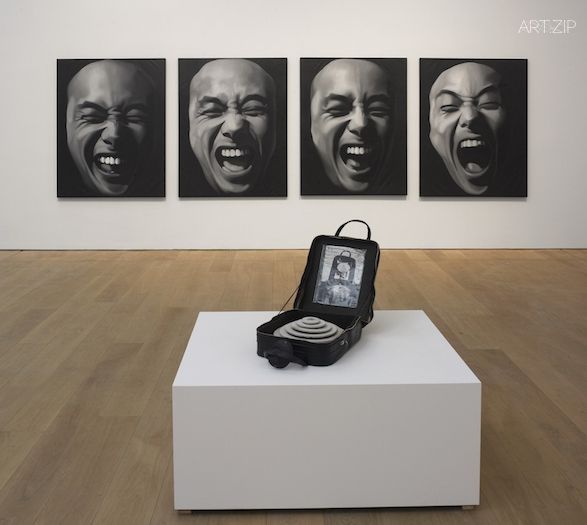
The Whitworth
1 July – 20 September 2015
.
The Whitworth announced today that Chinese Art from 1970 to Now will be the next major exhibition in their newly renovated exhibition spaces. The exhibition will be the first UK show curated from the renowned M+ Sigg Collection. It brings together 80 significant works by leading contemporary Chinese artists including Ai Weiwei, Cao Fei and Zhang Peili, to examine how art can question, challenge and stimulate.
Spanning forty years, it will explore questions concerning the conditions for artistic practice, freedom of expression and the freedom of art by exploring the subversive practice of artists including the ‘No Name Group’. Via events on Tiananmen Square in 1989 and ending with the incredibly vibrant art scene of today. Highlights include Family Tree (2000) by Zhang Huan, one of the most influential and provocative contemporary artists working today. This photographic work is the result of a single day’s performance where nine calligraphy painters took turns to write lyrics about the artist’s family history on his face. Weng Fen’s On the Wall series (2002) captures China in the throes of rapid urbanisation in the early 2000s. Often featuring adolescents sat on a wall, these extraordinary photographs present the personal transition that mirrors China’s own economic, political and social change.
The Whitworth will also exhibit Ai Weiwei’s installation, Still Life (1995-2000). This mass-display of thousands of Stone Age axe heads is an iconoclastic gesture made to offset the value and importance of the ancient object.
Other exhibition artists include: Cao Fei, Chi Xiaoning, Feng Guodong, Geng Jianyi, Hai Bo, Huang Rui, Huang Yong Ping, Kan Xuan, Liang Yuanwei, Lin Yilin, Liu Heung-Shing Liu Wei, Song Dong, Wang Guangyi, Wang Jin, Wang Keping, Weng Fen, Xing Danwen, Yang Fudong, Yangjiang Group, Yin Xiuzhen, Zhang Peili, Zhan Wang, Zhang Wei, Zhang Xiaogang and Zheng Guogu.
The Whitworth and M+ Sigg Collection curators have collaborated on this project to devise a completely unique show that is designed to take advantage of the new spaces of the redeveloped Whitworth, while retaining the core message of the M+ Sigg Collection.
.
.
Dr. Maria Balshaw, Director of the Whitworth commented: ‘The M+ Sigg Collection is drawn from Swiss collector Uli Siggs unique collection that arose out of his realisation that the experimental contemporary art practices emerging across China were going undocumented. It is now universally recognised as the largest, most comprehensive and important historical ‘document’ of the culturally dynamic period of Chinese history between the T9705 to present day. It will form the backbone of the new M+ museum in Hong Kong due to open in 2017. We are honored and delighted to be the only UK gallery to show these works.’
Dr. Uli Sigg said, ‘I was interested in the works created in this unpredictable milieu and in the atmosphere of a nation in total transformation… The M+ Sigg Collection invites a critical reflect on the short history of contemporary art in China and cultivates lucid insights into Chinese society in a historical period that in retrospect will be considered very important.‘
Lars Nittve, Executive Director of M+ commented: ‘We are very happy to be working with the Whitworth to bring this selection of works from the M+ Sigg Collection to UK audiences. This will be the last chance in Europe to see some of the key works from the first decades of Chinese contemporary art before they travel to Asia for a series of exhibitions, prior to being installed in their new home at M+, Hong Kong’s new museum for visual culture, which opens to the public in 2019.’
Pi Li, Uli Sigg Senior Curator of Chinese Art for M+ stated: “In what has been a challenging four decades in the history of Chinese art, Chinese artists have constantly navigated between domestic and global artistic, social and political tensions in their pursuit of artistic freedom. Drawing seminal pieces by key artists from the M+ Sigg Collection, this exhibition traces and illustrates the robust output of Chinese art through historical artistic movements from the late 1970s to the present day, presenting a fascinating story of the development of Chinese contemporary art. ’



















